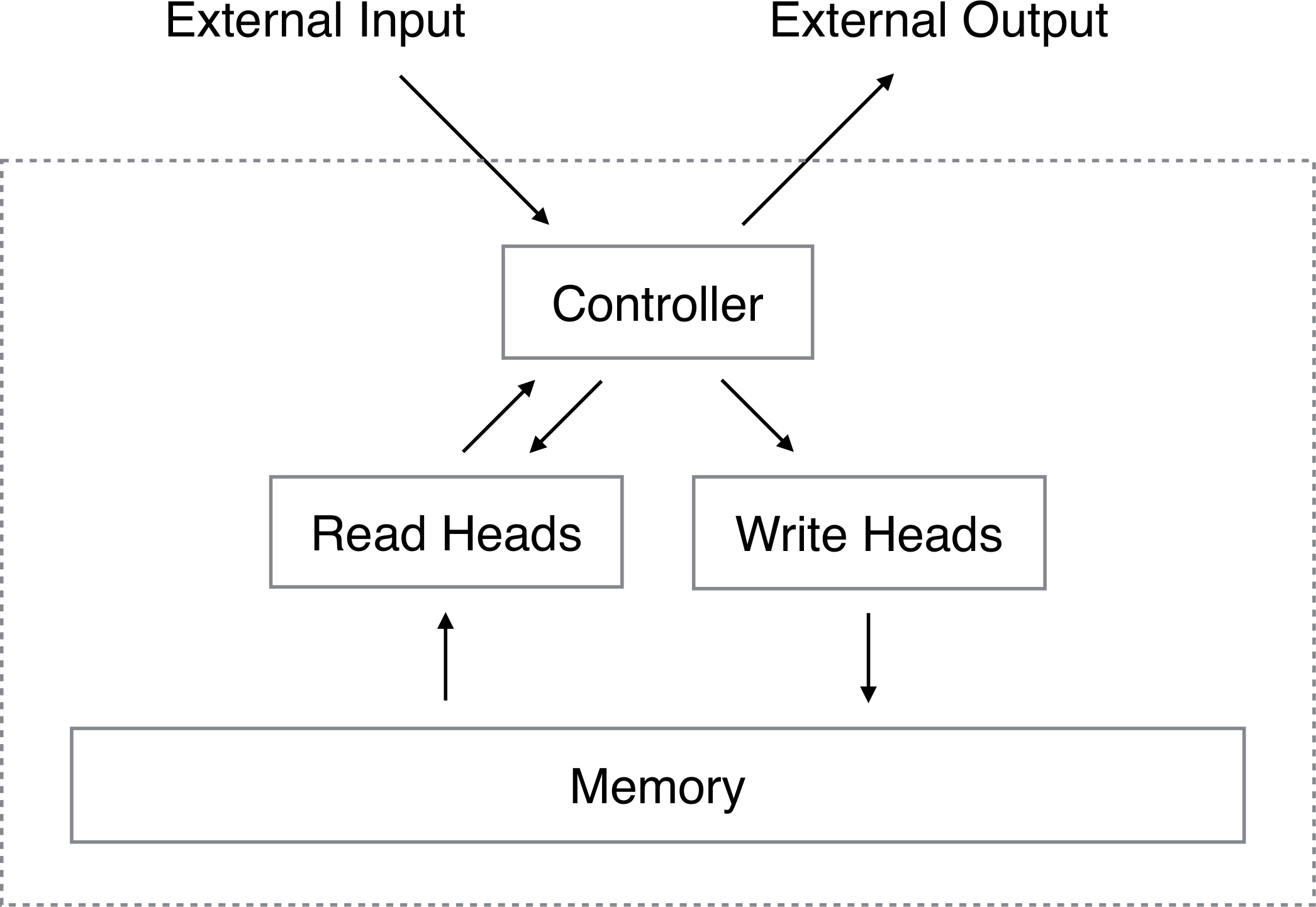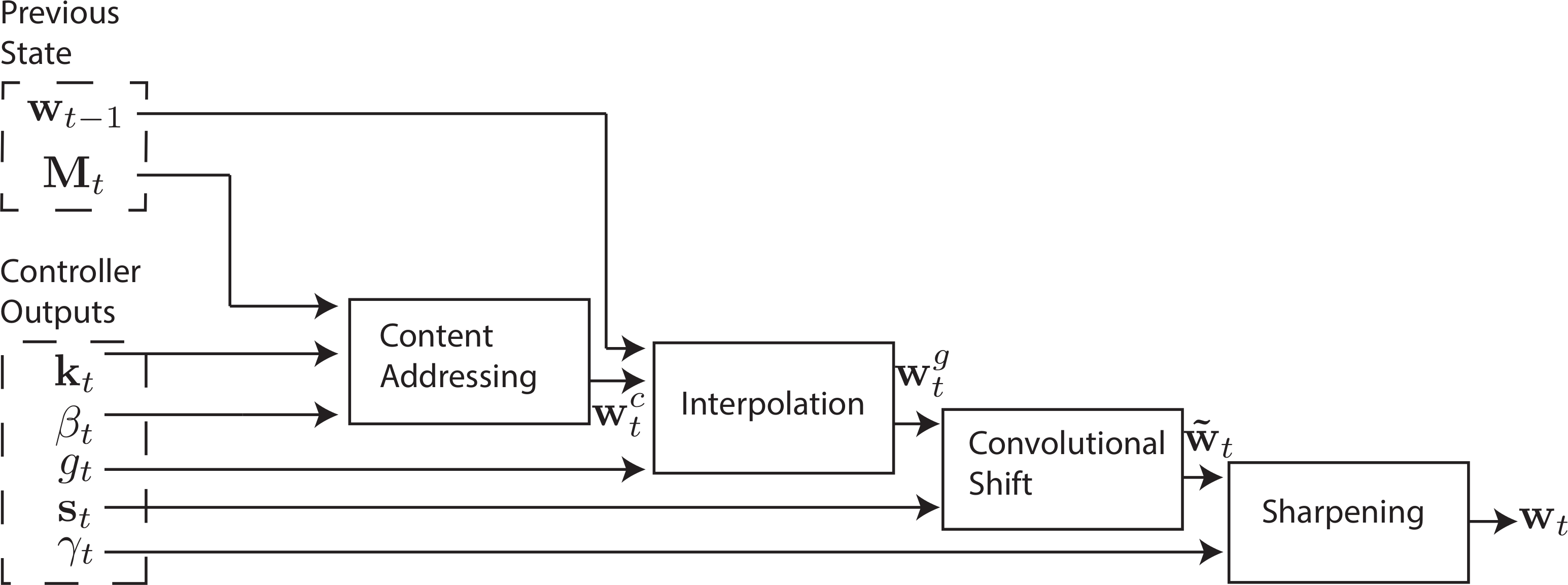
Introduction to Neural Turing Machines
Neural Turing Machines (NTMs) represent a significant advancement in machine learning, merging the concepts of neural networks with traditional Turing machine operations. This integration allows NTMs to leverage external memory resources, enabling them to interact with data fluidly and perform complex tasks that standard neural networks struggle with.
In essence, an NTM is designed to be a 'differentiable computer' that can be trained using gradient descent. This unique capability means NTMs can infer algorithms similar to those that traditional computer programs execute. The architecture of an NTM comprises a neural network controller and a memory bank, facilitating intricate operations like reading and writing data to memory, akin to how a traditional Turing machine functions[1].
The Architecture of NTMs

An NTM’s architecture integrates several components:
Controller: The neural network that interacts with the external environment.
Memory Bank: A matrix where data is read from and written to through specialized 'read' and 'write' heads.
The focus of the attention mechanism in the NTM allows it to access memory locations selectively. The ability to read and write at various memory locations enables the system to execute tasks that require recalling information or altering previous states, making it a powerful framework for learning and inference tasks[1].
Reading and Writing Mechanisms
The reading mechanism constructs a read vector based on different memory locations using a weighted combination of these locations. This approach allows for flexible data retrieval, where the model can concentrate its attention on relevant memory cells for the task at hand. Similarly, the writing process is divided into erase and add operations, ensuring that data can be efficiently written without corrupting the existing information[1].
Applications and Experiments
Copy Tasks
One of the key experiments conducted with NTMs is the 'Copy Task.' In this scenario, the NTM is presented with sequences of random binary vectors and tasked with reproducing them accurately. The results indicated that NTMs, particularly those with a feedforward controller, significantly outperformed traditional LSTMs in the ability to copy longer sequences. NTMs maintained high performance even when the length of the sequences surpassed the lengths seen during training, demonstrating powerful generalization capabilities[1].
Repeat Copy and Associative Recall
The 'Repeat Copy Task' further tested the NTM's adaptability and memory. Here, the model was required to replicate a sequence multiple times. The findings showed that NTMs could generalize to produce sequences that were not previously encountered during training while LSTMs struggled beyond specific lengths. Notably, the NTM's ability to recall previous items and repetitions indicated it had learned an internal structure akin to a simple programming loop[1].
Following this, the 'Associative Recall Task' allowed the NTM to leverage its memory effectively by associating an input sequence with corresponding outputs. Again, the NTM excelled in comparing it with LSTM architectures and demonstrated its potential to store and recall information dynamically.
Dynamic N-Grams and Priority Sorting
The dynamic N-Grams task assessed whether the NTM could adaptively handle new predictive distributions based on historical data. This task involved using previous contexts to predict subsequent data, showcasing how NTMs manage to learn from sequences flexibly. They achieved better performance compared to traditional models like LSTMs by utilizing memory efficiently[1].
In addition, the 'Priority Sort Task' represented another complex application. Here, the NTM was required to sort data based on priority ratings. The architecture showed significant promise by organizing sequences accurately, illustrating its capability to execute sorting algorithms not easily managed by conventional neural networks[1].

Conclusion
Neural Turing Machines illustrate a progressive step towards more sophisticated artificial intelligence systems by combining neural networks' learning prowess with the computational abilities of Turing machines. The architecture allows NTMs to execute a variety of tasks, including copying sequences, recalling associative data, managing dynamic probabilities, and sorting, with remarkable efficiency and adaptability. These advancements signal a promising future for machine learning, where algorithms can learn to process and manipulate information in ways that closely resemble human cognitive functions[1].
In summary, the exploration of NTMs not only enhances our understanding of machine learning but also opens new avenues for developing AI systems capable of complex reasoning and problem-solving, firmly placing them at the forefront of artificial intelligence technology.
Get more accurate answers with Super Pandi, upload files, personalized discovery feed, save searches and contribute to the PandiPedia.
Let's look at alternatives:
- Modify the query.
- Start a new thread.
- Remove sources (if manually added).